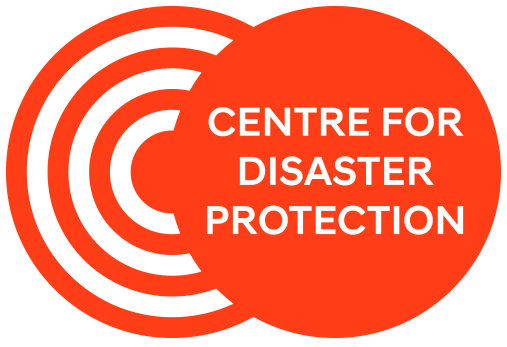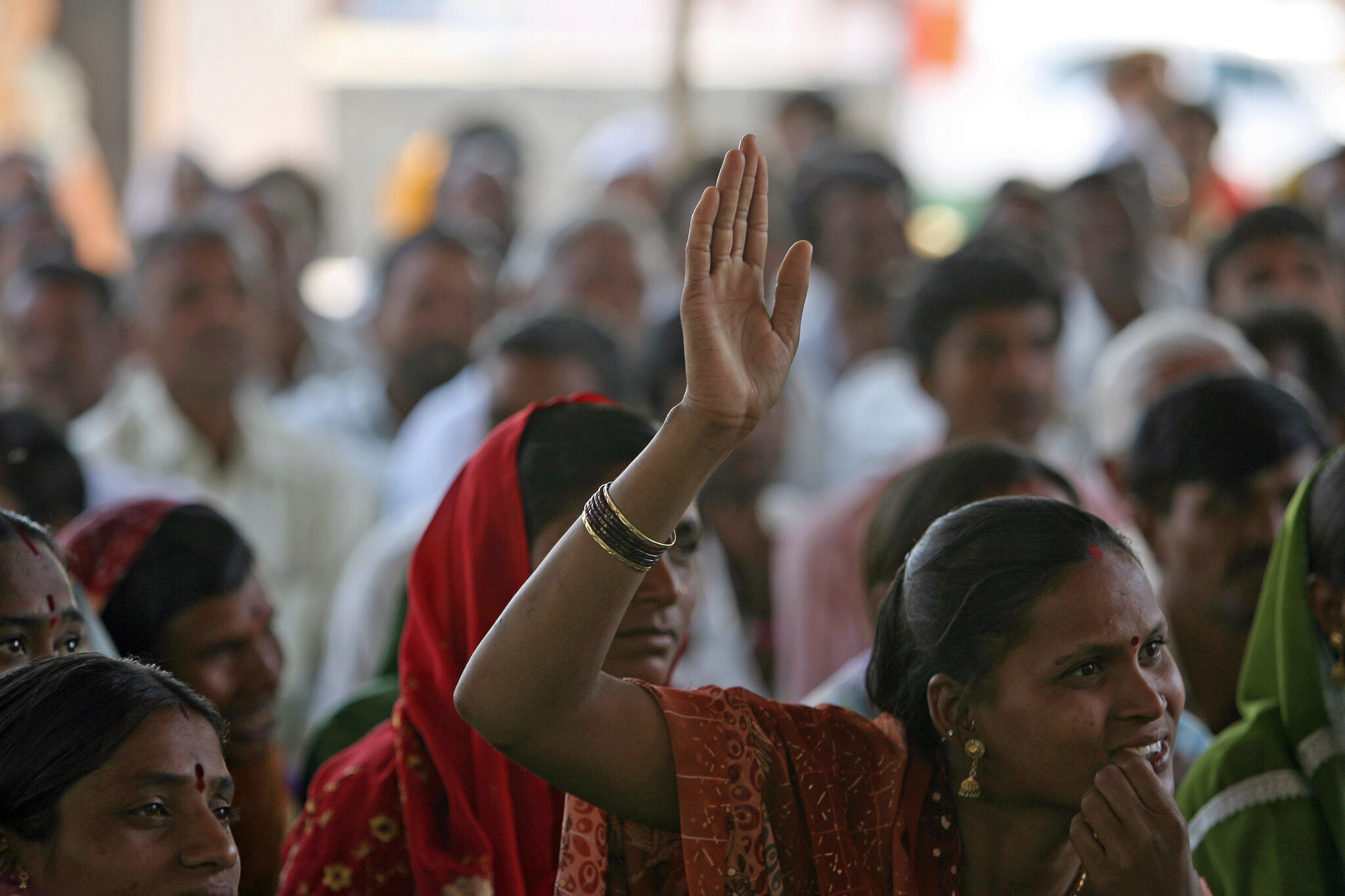Of spinach and Ancient Egypt – starting a serious conversation about accountability
by Sophia Swithern, Independent Consultant
Simone D. McCourtie / World Bank
Everyone gets it, right?
Accountability is like eating spinach: no one disagrees with it in principle [1]. And across the disaster risk financing (DRF) world there’s certainly agreement that accountability is important. It’s there in the core principles of key players from the InsuResilience Global Partnership to the Global Risk Financing Facility to the Start Network, and it underpins the ‘7 keys to unlock effective DRF’.
And there’s a powerful case for accountability. Ethically, it’s the right thing to do: it’s about responsible use of public goods and power; it’s about justice – which is critical as the aid sector has a hard think about its legacy of perpetuating power imbalances. And, practically, it’s the effective thing to do: more transparency, engagement, and responsiveness means more trust – and trust is the bedrock of uptake. This is especially true for DRF, which is innovating fast in uncertain situations.
So the sector has made commitments to, and the case for, accountability – at least in theory. But there are real gaps in putting this into practice, in regard to developing clarity and detail on doing accountability. There are a couple of reasons for this. For starters, doing accountability properly is hard, as experience from many other sectors attests. But for DRF it’s perhaps also a question of maturity: minds and money have been focused on getting the nuts and bolts in place, on proving that instruments work. Arguably, accountability needs to be a first principle of design, rather than a secondary afterthought, but as the recent DRF surge begins to mature beyond its pilot-phase infancy, now’s the time for more attention and sophistication around accountability. And there seems to be a real groundswell of desire and activity among DRF actors right now to do this.
That’s why we felt it was the time to start a discussion, beginning with a review of the evidence base to date. We wanted to ensure clarity and to spark action, by starting with a common definition of accountability, a stock-take of practice, and an identification of the main entry points and thorny challenges. Our intention is that this is a first step in what must become a meaningfully inclusive effort to move the discussion, the evidence, and the practice forward.
What are we talking about when we talk about accountability?
Definitions are crucial: defining something vaguely leads to doing it vaguely. Accountability is one of those fuzzy terms which is defined in myriad ways and taken to mean everything and nothing. So we put forward a basic definition of the what and the who of accountability, based on definitions used by different DRF actors. Simply put, it’s this: accountability means being answerable for the decisions and actions you take. It involves taking account of, and being able to be held to account by, the people who those decisions and actions affect. And clearly accountability also involves transparency and participation: people can’t hold institutions to account unless they have access to information, and the opportunities to raise their voices. So, for the at-risk populations who should be benefiting from these instruments, it means having information, input, and influence right through the life-cycle of disaster risk-financed interventions: from being engaged in up-front decisions about prioritisation and design to being able to receive redress if things go wrong in delivery.
So what for DRF?
Let’s be clear, when it comes to accountability DRF isn’t special. The same imperatives apply for these instruments as for any other use of public finance. And many of the things that make DRF distinctive aren’t unique. But there are several features which shape the entry points – and the challenges – in regard to putting accountability into practice in DRF instruments. Two of them stand out: the science and the timing.
Modelling: the science factor
In Ancient Egypt, the priesthood developed complex rituals to shroud their flood prediction tool – the Nilometer – in secrecy, and so maintain the authority of the rulers. Of course, there’s no Pharaoh power-play at work in DRF, and indeed science-based models and triggers are intended to make decisions more objective and transparent. But there is still the notion that science is an elite preserve, and its complex technicalities make it ill-suited for non-specialist public engagement.
The fallibility of predictive models shows this notion to be a fallacy. Imperfect data and models result in basis risk, and imperfect communication of the science results in low satisfaction and uptake – so there’s a clear need to involve at-risk communities in risk-modelling and trigger design. And the good news is that experience across a number of instruments shows that introducing participation and transparency into data-gathering and modelling is both possible and effective: initiatives by the International Federation of Red Cross and Red Crescent Societies, the Start Network, the World Food Programme, and the Next Generation Drought Index consortium show how co-generated and consultative data-gathering can create more accurate DRF models which more accurately represent the risks that people face.
The challenge now is to take this to the next level: to ensure that participation moves way beyond data-extraction, to build it into an ongoing and symmetrical exchange of information, a feedback loop – and to figure out how to do all this at scale.
Timing: the ex-ante factor
The promise of DRF – that is, ex-ante agreements rather than post-hoc begging bowls – is also held to be promising for accountability. Having all that time up front, the argument goes, means lots more space for engagement compared to responses applied in the heat of the humanitarian moment. Binding politicians to commitments up front prevents them being swayed by various influences when a crisis hits.
There’s a way to go in realising this promise. Recent experience of many instruments shows that time pressures are significant. There’s the pressure that comes with piloting new instruments and approaches – to move fast and prove concept and value quickly. And then there’s the fact that – especially in rapid-onset disasters like floods – the pay-out and implementation period can be extremely short (sometimes a matter of days). It’s over before there’s a real chance to deal with any complaints.
DRF actors can mitigate these time pressures by finding ways to engage people up front in targeting and distribution decisions, and by establishing clear mutual expectations. It’s not easy – in fact, it’s notoriously hard to engage people in the seemingly distant and theoretical scenarios that are DRF’s concern, when their households are dealing with the pressing concerns of the here and now. Perhaps here we can learn from mutual insurance instruments, where ownership and engagement is the lifeblood of the instrument, that circulates right through the cycle from design through to pay-out.
Getting serious about accountability: breadth and depth
In our first-pass stock-take of accountability practice in DRF instruments we looked across the board: from sovereign to meso to micro instruments, from risk retention mechanisms (such as the World Bank’s Cat DDOs) to risk transfer mechanisms (such as the ARC insurance products). We found many examples of good practice: improvements in transparency, detailed complaints mechanisms, and efforts to consult at-risk communities. Agencies can learn a lot simply by sharing these examples and experiences, and by being honest about their successes and shortcomings. But what was glaringly absent was strategic ‘end-to-end’ approaches to accountability. Efforts tended to cluster around ‘ground-truthing’ data and models, at one end, and putting in place complaints mechanisms, at the other. There wasn’t much of a logic or a clear thread connecting them. And at the same time as this breadth of vision was missing, the depth of many initiatives wasn’t clear. In other words, there were nice words and policies about transparency, participation, and consultation, but little evidence about how nominal – or otherwise – these were.
So what we need now is some serious work to expand the breadth and depth of accountability in DRF, to enable DRF actors to learn from and challenge each other, and importantly to bring in other voices to teach and challenge them too. After all, improving accountability through closed room conversations would be the ultimate paradox.
In our paper we set out some starter questions for this serious work, which we hope to support the sector in addressing. These are questions of evidence, of analysis, and of action. None of them have ready answers, and rightly so – because accountability doesn’t have easy, one-shot solutions. It’s a high standard and a tall order, which all of us who are purporting to support public goods need to keep stretching ourselves to reach. This isn’t something that any organisation can or should do unilaterally – it is going to take a collective and inclusive effort, and we are looking forward to being part of this.
[1] With apologies to Sherry Arnstein who first coined this phrase in 1969 in relation to citizen participation.

